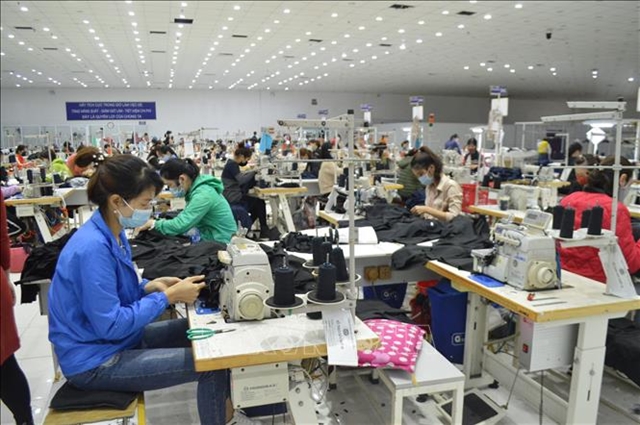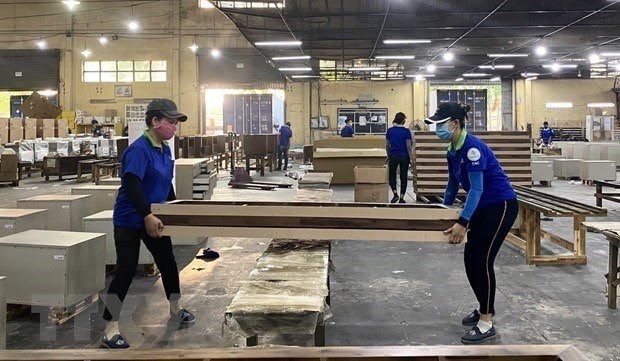 Economy
Economy


|
| Workers check furniture products at Thuận An Wood Processing JSC in Bình Dương Province. The total export value of timber and forest products is targeted at $25 billion by 2030. VNA/VNS Photo |
HÀ NỘI — Việt Nam is targeting US$20 billion in total timber exports by 2025, an increase of more than $9 billion compared to now.
The goal is to develop a sustainable and efficient wood processing industry for 2021-2030, approved by Deputy Prime Minister Lê Văn Thành on March 10.
The total export value of timber and forest products is targeted at $25 billion by 2030.
The value of timber and wood products for domestic consumption will reach $5 billion in 2025 and over $6 billion in 2030.
According to the project, more than 80 per cent of wood processing and preservation establishments will have advanced production technology, and all timber and wood products for export and domestic consumption will be made from the legal raw material of timber.
By 2030, the domestic wood processing industry will become an important economic sector and build and develop a reputable brand for Vietnamese wood products in domestic and export markets.
Việt Nam strives to become one of the leading countries in the world's production, processing, and export of timber and wood products.
Another task of the project is to develop infrastructure and expand the production scale. Specifically, the industry will form five forestry zones with high technology applications to attract investment from wood processing enterprises and enterprises producing auxiliary materials.
Việt Nam will build an international furniture exhibition centre and encourage the development of research centres to design wood products per the needs of consumers.
Another task is to develop products with added value, high and stable demand and competitive advantages in the market. The prioritised production includes furniture, outdoor furniture, and artificial wood plank products.
The US, Japan, the Republic of Korea, the EU, and China are identified as main markets for Vietnamese wood products, while wood processing firms are encouraged to use the “Gỗ Việt” (Vietnamese wood) trademark and capitalise on e-commerce and other technological applications.
The forestry sector will innovate to achieve those goals, focusing on training high-qualified human resources to access modern technologies and create breakthroughs in research, selection, breeding and production, biotechnology and application of high technologies.
At the same time, it will reorganise the concentrated production areas in association with forest product processing zones and commercial services to reduce transportation costs and increase the value of wood products.
The sector will also strengthen research and forecast activities and market information capacity. It will enhance foreign direct investment and actively participate in the global supply chain of forestry products. —VNS

.jpg)


